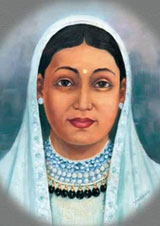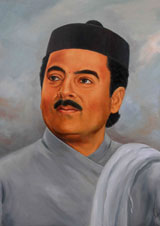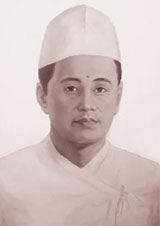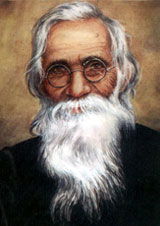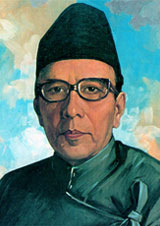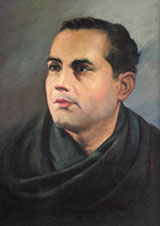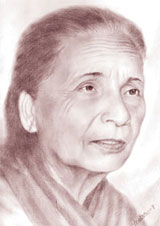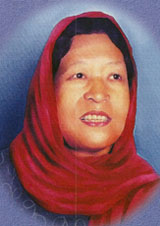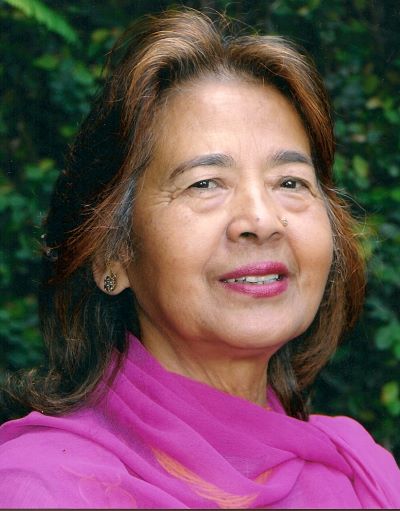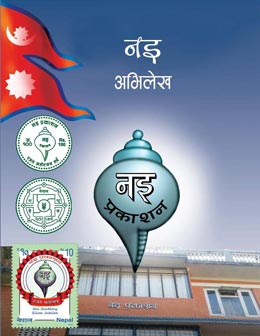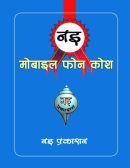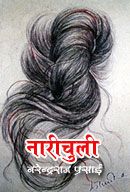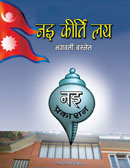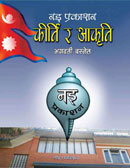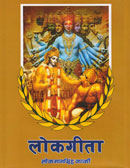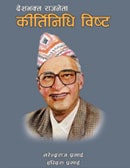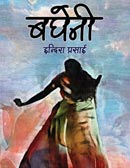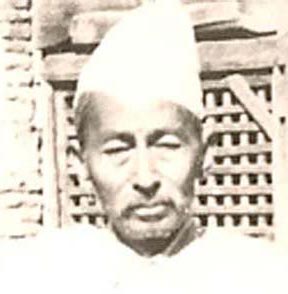
With the song “KaloThekiNaran Kali Kathko”, the Nepali folk music scene witnessed a new turn. He did sing numerous numbers but this particular song brought Sahila immense popularity. This song not only introduced him as a fabulous singer but also earned himself the epithet of an ‘evergreen artist’. Even then, as soon as the song hit the market, he was referred to as Kalo ThekiSahila. The gramophone recording of the song also did commercially very well. It was only after the huge success of “KaloThekiNaran Kali Kathko”, was it proved that Nepali numbers too could have great market value.
Ustad Sahila was born to Bakhat Man Shrestha and Guheshwori Shrestha. He had four brothers, and he being the third child, was referred to as Sahila by everyone who knew him. And later Astaman Shrestha officially registered his name as just Sahila.
Ustad Sahila was born in 1951 BS in Dewapatan, Pashupati, Kathmandu. Since his childhood, his concentrated more in music and sports rather than his academics. By the time he was a teenager he had already started singing at major functions in and around the locality. Whenever Subba NiranjanBhaktaMathema heard him sing, he used to be all praises for Sahila. Subba NiranjanBhaktaMathema was so impressed with Sahila that he took him along to Calcutta and admitted him at music training institute. While in Calcutta, Sahila was trained in music under the guidance of Pandit LaxmiKanta, Ustad Surya Mishra, Ustad Shiva and Ustad Gafur Khan. Besides learning the fine arts of music, he worked on a daily wage basis. For around 16 years he stayed in Calcutta broadening his knowledge in Music. He also learned to speak in Hindi, Bangali and English and above all, he excelled in music especially singing. The musical journey had begun for him.
“Sahilaji! ChandanikoUkalima
Laula Thulo Bar Maya Lai!”
Singer: Ustad Sahila
Even after residing in Calcutta for at over 16 years, there were no major changes in Sahila. The way he spoke, his thoughts and his style of living were all the same Nothing had changed. He spoke the typical Nepali language, used to wear typical Nepali attire and at the same time sang typical Nepali songs. He was a typical Nepali ambassador. Even Swor SamratNarayanGopal wrote a piece on the patriotism of Sahila.
After returning back from Calcutta, Sahila started visiting Palpa on a regular basis. He married Sanu MaiyaShrestha with whom he had been having an affair for a while. She gave birth to a lovely daughter and simultaneously his musical career took up steam. Everyone wanted him over to their place for a singing session which in turn resulted in him travelling extensively to various places in the country. “KaloTheki” was doing wonders.
Sahila had recorded his first song in 1990 BS in Calcutta. That number also became quite popular. It won’t be wrong to put that Sahila is that foremost singer who started recording songs only in the latter years of his life
Then Sahila had only one mission in his life and that was to sing songs and do something in music. For this, he went to every nook and corner of Kathmandu and wherever he went he used to tell about what happen there to his wife in detail. She was this perfect wife and spend his entire life serving him. Sadly, she expired before time. This incident divested Sahila to the core. He was left with no one around than his small kid. Whenever he used to feel lonely, sad and depressed he used to find comfort in his daughter and used to cry his heart out and also started living life by looking to his daughter. But fate had more tragedy stored in for him. His one and only daughter also died and this made Sahila a lifeless person.
Now, it was more than hard for Sahila to live life alone. When he reached 40 years of old due to his relatives and friends constant nagging he decided to marry again. There were many who wanted their daughter to get married to him…after all Sahila was already a prominent person. In 1991 BS he got settled with Belayeti Devi who was a daughter of Kaji Man Karmacharya from Bhaktapur. Soon after the marriage, they migrated to Calcutta.
Back in Calcutta, he again started singing. Then he sang some of the songs written by him and some pen down by Bal Krishna Sama. During those years the men who continuously encouraged Sahila to record songs were Sahu BahadurLal Joshi and Sahu JanakLal Joshi. Soon after recording, Sahila again reached the pinnacle of popularity. Now he was not only singing but he was also singing what he felt deep inside.
“TaalmuniMachelilaiLaideuPanchiJaal
Yeuta LageyBichodHuncha Jodi LaijauKaal Maya Lai!”
Singer: Ustad Sahila
The songs of Sahila were highly appreciated by people back in his home. Here, whatever amount of disc record used to be sold used to be of none other than Sahila’s. Each of Sahila’s disc record used to be available in each and every home. He was a living legend!
Sahila was also the personal favorite of Chandra ShumserRana. When Chandra ShumserRana came along with his daughter in Baba Maharani’s palace in Bal Rampur, Uttar Pradesh, India, Sahila was also asked to come and stay in the palace. Here, Sahila used to sing songs, ghazal and bhajan to Chandra ShumserRana’s daughter. He was even appointed a job there to look after the kids there. Due to this, he worked there for six good years and one day when he decided to come back to Nepal again he was given Rs 12,00 by Baba Maharani.
During 1990 BS, Sahila represented the modern Jhaurey singer. That time, there was no one who fitted the bill to compete with him. He was such a caliber singer that he could even sing non-stop for hours. He was also a renown ghazal and a bhajan singer to such an extent that theghazal’s he sang was never copied by any other singers around.
In 1992 BS, his second wife gave birth to their son — Ratna Man and four years after that she gave birth to their daughter — Ratna Maya. Like father like son…Ratna Man also showed a keen interest in music since childhood and when he reached his age he also sang songs equally good and with ease like his father. Sahila on the other hand was growing old and together with that his interest and his involvement in music also declined. Now, most of the time one would find him playing cards, smoking marijuana and drinking alcohol which sure looked very pathetic.
The reasons for leading life like this was also because he always had this regret for not making his own house. As there was no way of income, he used to live in a rented flat and that too he used to change constantly. The famous and the exuberant Sahila expired on Magh 15, 2013 BS and left back memories and his creations.
by
Narendra Raj Prasai
Nepali to English
Translated by
Dipti Sherchan






